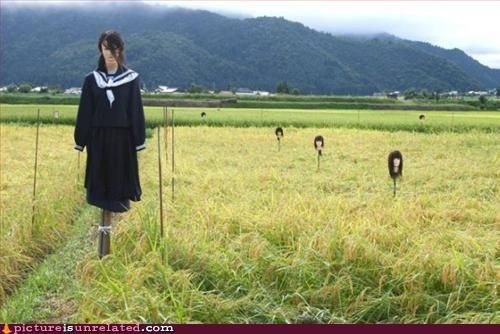The Weird and the Eerie - #devstaticdrive
I wrote this as a social media thread about a year ago when I was aligning some thoughts about distilling certain terms and how fruitful it’s been every time we’ve had to really drill down into what we mean when we use a certain word in a design context. It’s become a habit after using Zak McClendon’s Big Board technique bakes some of that hyper-distillation into the design process, forcing you to really scrutinize word choices and bring possible conflicts to the surface to be dealt with. But Mark Fisher, blessed sense-maker, has also been supremely useful in informing some of those deeper horror themes specifically. It even made me look at the holes in the donuts in Twin Peaks in a new way. How do you change someone’s perception of a donut? Blessed be the sense-makers. Anyway, here tis!
Here’s some #devstaticdrive for ya: making a horror-inspired game that isn’t actually a horror game means getting intimately acquainted with the chasms between and the nuances of the:
weird
eerie
uncanny
marvelous
fantastic
grotesque
egress
Mark Fisher’s book “The Weird and the Eerie” has been exceptional help doing this work. by distilling these distinctions way down I can make sure we’re hitting the beats we want to hit in certain scenes, and that there’s enough variation to not feel flat.
I’ve learned the weird and the eerie are two (very distinct) modes of the strange. The strange isn’t the horrific, the allure isn’t in enjoying what scares us (we’re not making P.T. or a jump scare simulator) but in a fascination. Experiencing apprehension, dread, even morbid attraction.
The weird, (weird fiction, lovecraft, lynch etc) concerns itself with that which does not belong. A sense of wrongness is the foreboding driving force in the place of suspense, which has no place in the weird. How we’re unsettled by seeing something not just out of place— but not of our place.
Setting the weird in a real time and place is crucial, without it ‘the outside’ loses meaning. Lovecraft was obsessed with the question of the outside, convinced integration between worlds meant absolute destruction of both (he was a huge xenophobe and racist after all)
Weird fiction always presents a threshold between two worlds, an egress where each world impacts the other, unlike fantasy stories like in Narnia or Oz, where the characters are the only thing changed by their voyage and return. (See Lynch’s curtains and holes, Club Silencio itself a threshold place).
Fascination as a motivating force is particularly interesting to me, especially as a game designer relying on player curiosity kicking in. weird fiction mustn’t horrify and repel, it has to find another way, it has to compel instead. without using suspense. (!!!)
The eerie, on the other hand, is where suspense lives. fisher describes it as either “a failure of absence, or a failure of presence”, fundamentally tied up with questions of agency and intent, what kind of agent is acting here? Eerie dies when the mystery is solved.
Another side of the eerie is a disengagement from current attachments. an “eerie calm” describes a serenity that comes with being unburdened from (or shirking) the urgencies and responsibilities of the every day. Contrasting the “quotidianness of it all” of the weird.
Tzvetan Todorov offers a structuralist definition of fantasy that I find intriguing too, that the fantastic is constituted by a suspension between the uncanny (stories which ultimately resolve in a naturalistic way) and the marvelous (stories which resolve supernaturalistically).
“Grotesque” actually derives from Roman ornamental design discovered during the excavation of Titus’ baths, or “grottoes”. human and animal shapes intermingled with foliage, flowers, and fruits were branded as “improper taste” by Vitruvius The Bummer because “such things neither are, nor can be, nor have been”.
The grotesque is where satire can happily situate itself, invoking laughter as much as revulsion. The co-presence of the laughable and that which is not compatible with the laughable. This has been particularly formative because “icky” is subjective, and often perpetuates some lazy shit.
We have 53 story scenes in dead static drive, and a bunch feature direct references to stories we love and cherish, but to me a lot of the most interesting work has been in diving deep into their structure and texture, and making sure that’s getting a nod too.
It’s easy to use a lot of these terms unmindfully, just as a shorthand for a larger, vague concept. But there comes a point in the making where I need to shed the vague and nail these things down in detail so I can wield them far more practicably. Thanks Mark.





